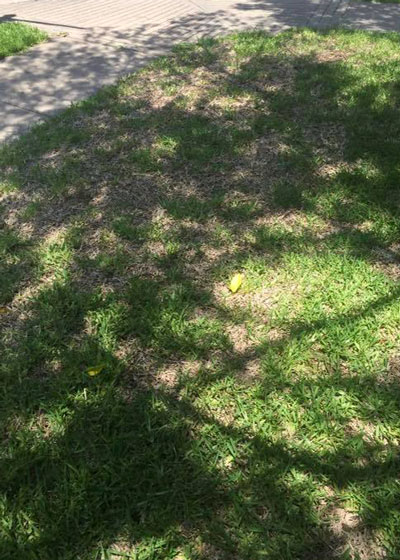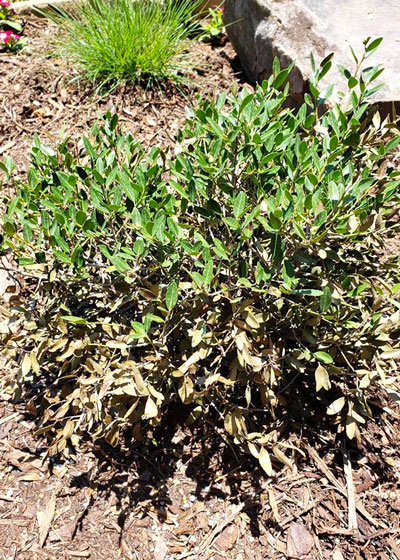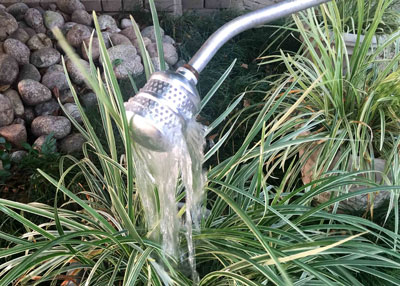Questions of the Week Numbers 3 and 4: June 14, 2018
“What’s happened to our St. Augustine and new shrubs?”

This is Take All Root Rot in St. Augustine. Spring 2018 has been a bad one for this disease.
It seems like I can’t answer the question about St. Augustine not coming out this spring often enough. It’s been asked on the air, in my newspaper columns and on Facebook repeatedly.
Here’s the scoop on Take All Root Rot…
Take all root rot (TARR), also known as take all patch, has run rampant this spring over much of the state and certainly in DFW. If your lawn looks like this photo, please read through these facts carefully.
• TARR affects St. Augustine most commonly, although bermuda and zoysias are also susceptible.
• Be certain you’re not looking at excessive shade issues. TARR will be in sun and shade. If your lawn’s dieback is only in shade, that is probably the issue.
• TARR is an April/May issue (cool season). It has run its course now. You will not see it again until next spring, if then.
• The only proven remedy for TARR, as per research from Texas A&M, is to spread 1 inch of sphagnum peat across the infected areas. The fungus does not survive the acidic environment. Odd as it seems, adding sulfur does not work the same. However, the disease is no longer active in the hot weather and adding peat now would be of no benefit.
• If you have bare areas larger than 12 or 15 inches across, you may want to dig small plugs of St. Augustine from elsewhere in your lawn and transplant them into the bare spaces.
• If you begin to see dried areas developing in sunny parts of your yard in the next several weeks, check those for presence of chinch bugs. Those dry spots that don’t respond to irrigation are their symptoms. It will not be TARR.

This dwarf yaupon holly has been in this landscape for only a few days and it’s already struggling just to survive.
What happened to the new shrub?
This dwarf yaupon holly had been planted only a week or so before this photo was taken. The homeowner thought it had been watered properly and wondered if the hot weather was too much for it. However the problem ended up being something quite different – something that I’ve seen hundreds of times, a few of them in my own landscape.
New plants must be watered by hand for their first year or two in our landscapes. They were grown in lightweight planting mixes in the wholesale nurseries, and the plants’ roots have filled the original containers. They dry out much more rapidly than the soil around them, so sprinkler irrigation alone won’t be a good way to water them.
Use a water breaker or a water bubbler attached to a water wand to make the job easier, and make a point to water them thoroughly every 2 or 3 days.

Water bubbler breaks even the strongest stream of water into a gentle flow.
